HP HPE6-A48 Exam Practice Questions (P. 3)
- Full Access (61 questions)
- Six months of Premium Access
- Access to one million comments
- Seamless ChatGPT Integration
- Ability to download PDF files
- Anki Flashcard files for revision
- No Captcha & No AdSense
- Advanced Exam Configuration
Question #11
Refer to the exhibit.

A network engineer deploys two different DHCP pools in an Instant AP (IAP) cluster for WLANs that will have connectivity to a remote site using Aruba IPSec.
Based on the output shown in the exhibit, which IAP-VPN DHCP modes are being used?

A network engineer deploys two different DHCP pools in an Instant AP (IAP) cluster for WLANs that will have connectivity to a remote site using Aruba IPSec.
Based on the output shown in the exhibit, which IAP-VPN DHCP modes are being used?
- Adistributed L3 and centralized L3
- Bdistributed L3 and local L3
- Cdistributed L3 and centralized L2
- Dlocal L3 and centralized L2
Correct Answer:
C
C
send
light_mode
delete
Question #12
Refer to the exhibits.
Exhibit1 -
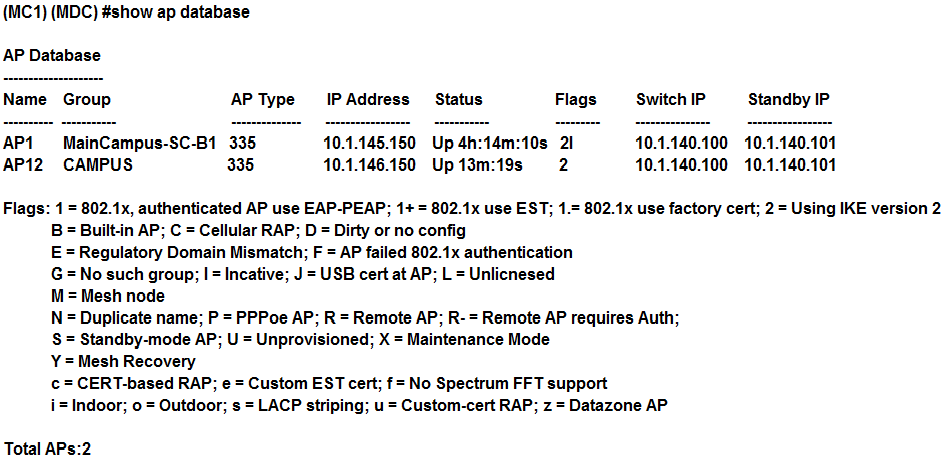
Exhibit 2 -

Based on outputs shown in the exhibits, what is the reason that AP12 is seen by two different controllers?
Exhibit1 -

Exhibit 2 -

Based on outputs shown in the exhibits, what is the reason that AP12 is seen by two different controllers?
- AAP12 connects to a high availability group. MC1 is the active controller, and MC11 is the standby controller.
- BAP12 is a multizone AP. MC1 is part of the primary zone, and MC11 is part of the datazone.
- CAP12 connects to an MC cluster. MC1 is the A-AAC, and MC2 is S-AAC.
- DAP12 is in the middle of the boot process. MC1 is the master IP controller, and MC11 is the LMS IP controller.
Correct Answer:
B
B
send
light_mode
delete
Question #13
Refer to the exhibit.
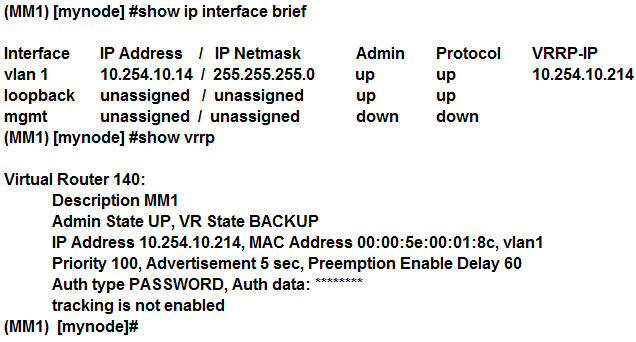
After a recent power outage where MM1 is located, the network administrator could not perform configuration tasks on Mobility Controllers (MC) for several hours.
The network administrator decides to acquire another Mobility Master (MM) and deploy L2 MM redundancy. The new MM is assigned the 10.254.10.15 IP address and VRRP is configured in both units. The network administrator verifies that VRRP is running, and prepares to complete the setup with the following scripts.
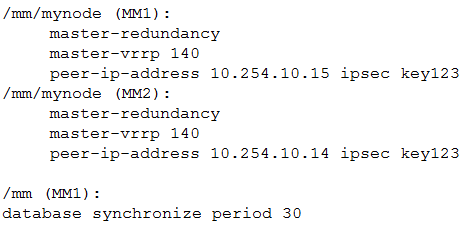
Which configuration tasks must the network administrator do before applying the script in order to successfully deploy L2 MM redundancy and prevent any other control plane outage?

After a recent power outage where MM1 is located, the network administrator could not perform configuration tasks on Mobility Controllers (MC) for several hours.
The network administrator decides to acquire another Mobility Master (MM) and deploy L2 MM redundancy. The new MM is assigned the 10.254.10.15 IP address and VRRP is configured in both units. The network administrator verifies that VRRP is running, and prepares to complete the setup with the following scripts.

Which configuration tasks must the network administrator do before applying the script in order to successfully deploy L2 MM redundancy and prevent any other control plane outage?
- AConfirm that the VRRP and master redundancy keys are the same.
- BChange the VIP address of ther VRRP process 140 to 10.254.10.15.
- CReduce the VRRP priority to 90 and restart the process in MM2.
- DEnable the MM database synchronization in MM2.
Correct Answer:
A
A
send
light_mode
delete
Question #14
Company 1 and Company 2 are medium-sized companies that collaborate in a joint venture. Each company owns a building, and each has their own ArubaOS 8
Mobility Master (MM)-Mobility Controller (MC) deployment. The buildings are located in front of one another. For the initial stage of the project, the companies want to interconnect their networks with fiber, and broadcast each other's SSIDs.
These are the requirements:
✑ Do not unify the company's network management responsibilities.
✑ Allow each company to take care of their own SSID setups when broadcasted in the other building.
✑ Terminate Company 1 user traffic on Company 1 MCs when they connect to Company 2 APs.
✑ Terminate Company 2 user traffic on Company 2 MCs when they connect to Company 1 APs.
What is needed to meet the solution requirements?
Mobility Master (MM)-Mobility Controller (MC) deployment. The buildings are located in front of one another. For the initial stage of the project, the companies want to interconnect their networks with fiber, and broadcast each other's SSIDs.
These are the requirements:
✑ Do not unify the company's network management responsibilities.
✑ Allow each company to take care of their own SSID setups when broadcasted in the other building.
✑ Terminate Company 1 user traffic on Company 1 MCs when they connect to Company 2 APs.
✑ Terminate Company 2 user traffic on Company 2 MCs when they connect to Company 1 APs.
What is needed to meet the solution requirements?
- AMultizone APs
- BInter MC S2S Ipsec tunnels
- CMulti MC Clusters
- DInter MC GRE tunnels
Correct Answer:
B
B
send
light_mode
delete
Question #15
Refer to the exhibits.
Exhibit 1 -
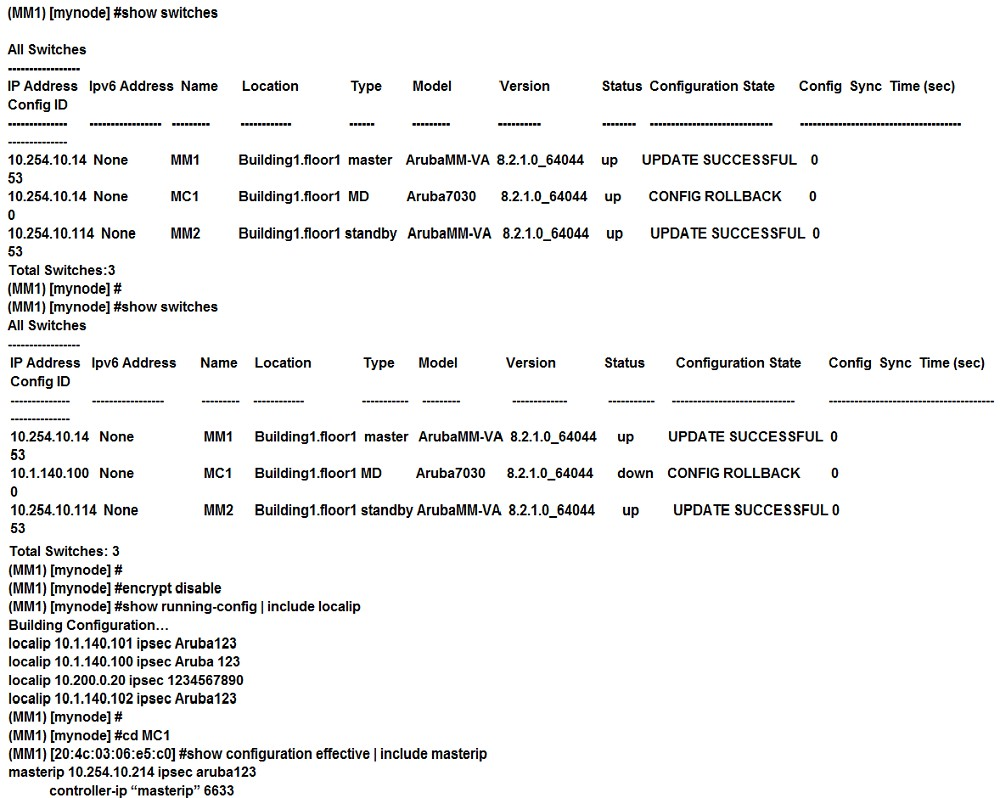
Exhibit 2 -
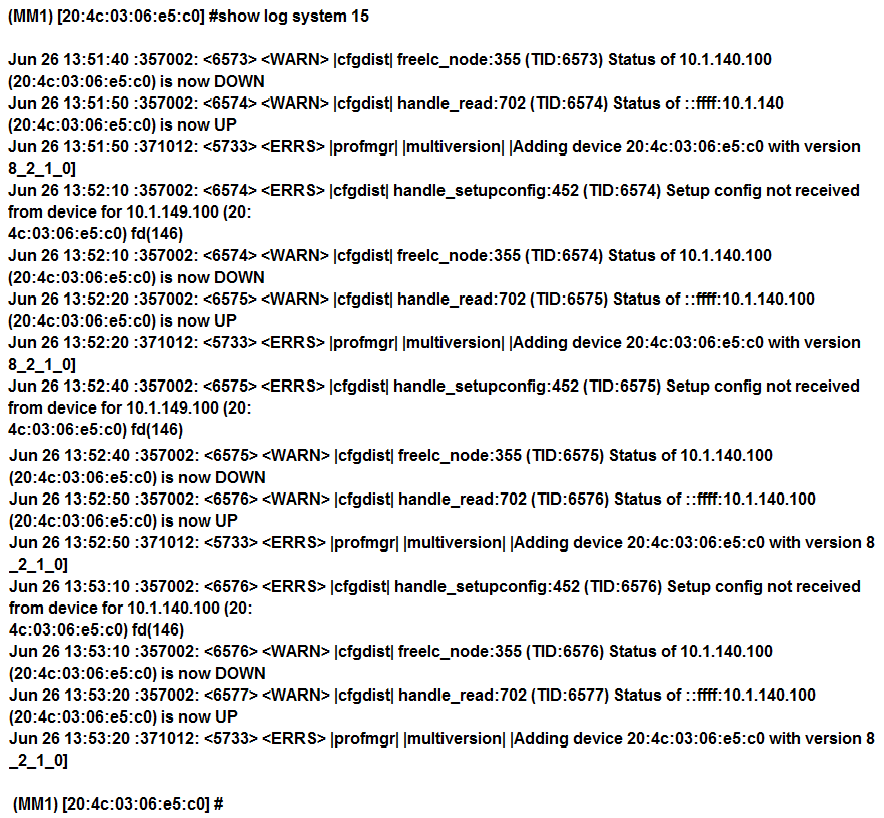
Exhibit 3 -
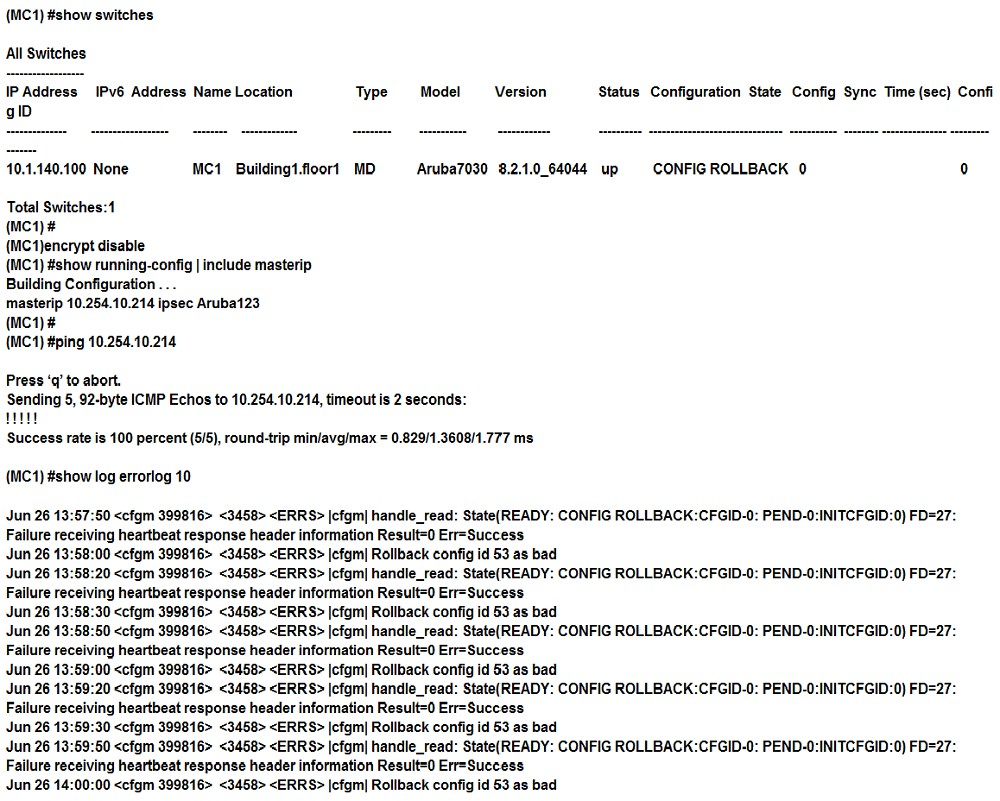
A network administrator deploys a Mobility Master (MM) pair with the VRRP VIP equal to 10.254.10.214, and attempts to associate MC1 to it. At first, the integration appears to be successful. However after a few minutes the network administrator issues the show switches command and sees that the MC1 is down, even though the device is up and running.
Every time the network administrator reboots the Mobility Controller (MC), the MC shows as being up and then it shows as being down. The network administrator gathers the information shown in the exhibits.
What should the network administrator do to resolve this problem?
Exhibit 1 -

Exhibit 2 -

Exhibit 3 -

A network administrator deploys a Mobility Master (MM) pair with the VRRP VIP equal to 10.254.10.214, and attempts to associate MC1 to it. At first, the integration appears to be successful. However after a few minutes the network administrator issues the show switches command and sees that the MC1 is down, even though the device is up and running.
Every time the network administrator reboots the Mobility Controller (MC), the MC shows as being up and then it shows as being down. The network administrator gathers the information shown in the exhibits.
What should the network administrator do to resolve this problem?
- AChange the localip ipsec key to Aruba123 in the mynode device level from the MM, save, and reboot.
- BEnable disaster recovery mode in MC1 and change the masterip ipsec key to Aruba 123, save, and reboot.
- CChange the masterip ipsec key to Aruba123 in the device level from the MM, save, then reboot MC1.
- DWipe out the configuration in MC1 and reboot, then run the full-setup configuration dialog all over again.
Correct Answer:
B
B
send
light_mode
delete
All Pages
